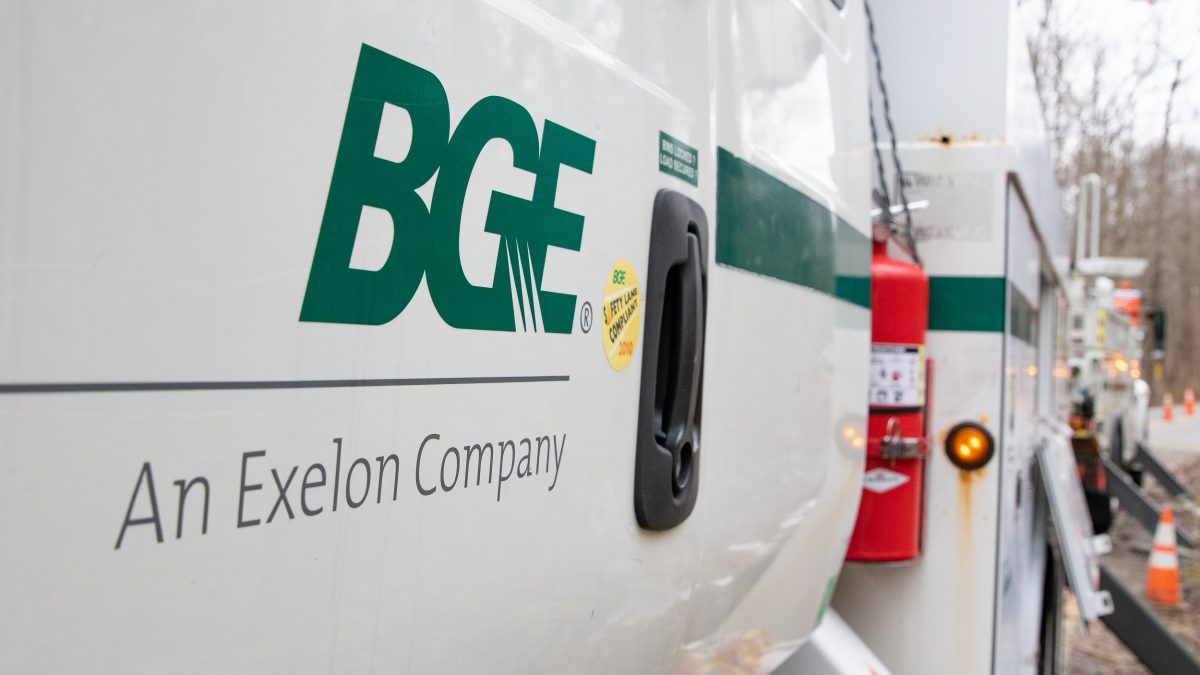More than 300 energy infrastructure projects and BGE operations in central Maryland support $15 billion in local economic impact and 26,000 jobs over the next three years.
Share
Story Topics
BGE filed a multi-year customer relief and energy infrastructure investment plan with the Maryland Public Service Commission (PSC) on May 15, 2020, designed to aid in the region’s recovery from the pandemic while continuing improvements to the company’s electric and natural gas systems.
Covering the years 2021 through 2023, the plan details how BGE will invest $5 billion in the electric grid and natural gas system serving 1.3 million electric customers and more than 680,000 natural gas customers. The Economic Alliance of Greater Baltimore calculates that these investments will have an economic impact of $15 billion, supporting more than 26,000 jobs.
As part of the plan, BGE will freeze customers’ base delivery rates at current levels for the next two years. Beginning June 1, 2020, electric supply costs are dropping 2.8 percent for BGE standard offer service customers due to a reduction in wholesale energy costs. This results from a continuing trend of significant wholesale electricity cost declines over the last decade. After the two-year delivery bill freeze, the company is requesting an 8.3 percent upward adjustment of rates in 2023 to reflect the investments being made over the three years.
Even with the proposed, requested adjustment three years from now, the average residential customer’s total BGE bill is projected to be 22 percent lower than it was in 2008 due to lower electric supply costs and customers’ use of less energy through more efficient appliances and energy-saving programs enabled by the smart grid. On average, BGE customers’ total bills are among the lowest in the country as a percentage of median household income – and substantially lower than the U.S. average.
“We appreciate the challenges that our customers and our community are facing. This is an opportunity to help our customers and provide a lift to the Maryland economy when it is needed most,” said Carim Khouzami, CEO of BGE. “Prior to the pandemic, we had been designing a forward-looking energy infrastructure investment plan as part of the state’s multi-year plan pilot. In light of the economic challenges created by the pandemic, we have been able to structure the plan to provide both near-term relief for customers and longer-term stimulus for the Maryland economy.”
BGE’s Workforce Collaborative will also be expanded; during the next three years, approximately 600 participants will be trained and assisted with job placement opportunities at companies that work with BGE on infrastructure projects. BGE is making a $1.5 million contribution using shareholder funds to the Fuel Fund of Maryland to assist limited income residential customers with their bills in 2020. This augments the customer-funded $2.6 million currently directed by BGE for customer assistance through the Fuel Fund.
New this year, BGE will provide $1 million in funding to county-administered business pandemic relief funds in central Maryland to assist small businesses that have been challenged by the economic hardships of the COVID-19 response. In addition, BGE will establish a small business relief grant program in 2021 for businesses with less than 25 employees to receive grants up to $20,000 each to help cover operating expenses.
BGE’s energy infrastructure investment plan includes more than 300 projects and maintenance programs for the period 2021-2023. Examples include:
- Enhancing energy infrastructure supporting the growth of important economic development sites.
- Installing smart automation equipment to more quickly identify and circumvent damage to the electric grid and reduce the frequency and duration of power outages.
- Replacing outmoded technologies, such as limited capacity 4kV electric systems, to improve reliability, enable greater adoption of solar energy and electric vehicle charging and to increase capacity in areas where redevelopment adds additional customer demand.
- Preparing the grid for extreme weather with continued tree trimming and vegetation management to ensure power line clearance and improve reliability during extreme weather events.
- Replacing outmoded natural gas pipeline segments using modern technologies and installing over-pressurization protection equipment to improve safety and reliability.
Customers have benefited from infrastructure improvements during the past decade — power outages have declined by more than 38 percent and when customers do experience a service interruption, their power is restored nearly 40 percent faster. Hundreds of miles of natural gas pipes are being replaced at an accelerated pace, which results in a safer, more efficient gas system that will reduce annual greenhouse gas emissions in central Maryland.
BGE’s plan is being filed under the PSC’s multi-year plan pilot announced in February 2020. These plans provide the PSC with planned utility investments in advance for review and approval. This model is used in a number of states nationwide and is a new format for Maryland where regulators previously allowed utilities to seek recovery of investments only after those investments were made.
The multi-year plan review process is a public process led by the PSC, an independent state commission, that ensures transparency, public input and fair rates for all customers and a decision on the proposed plan is expected from the PSC in December 2020. More information on BGE’s multi-year plan is available at bge.com.

